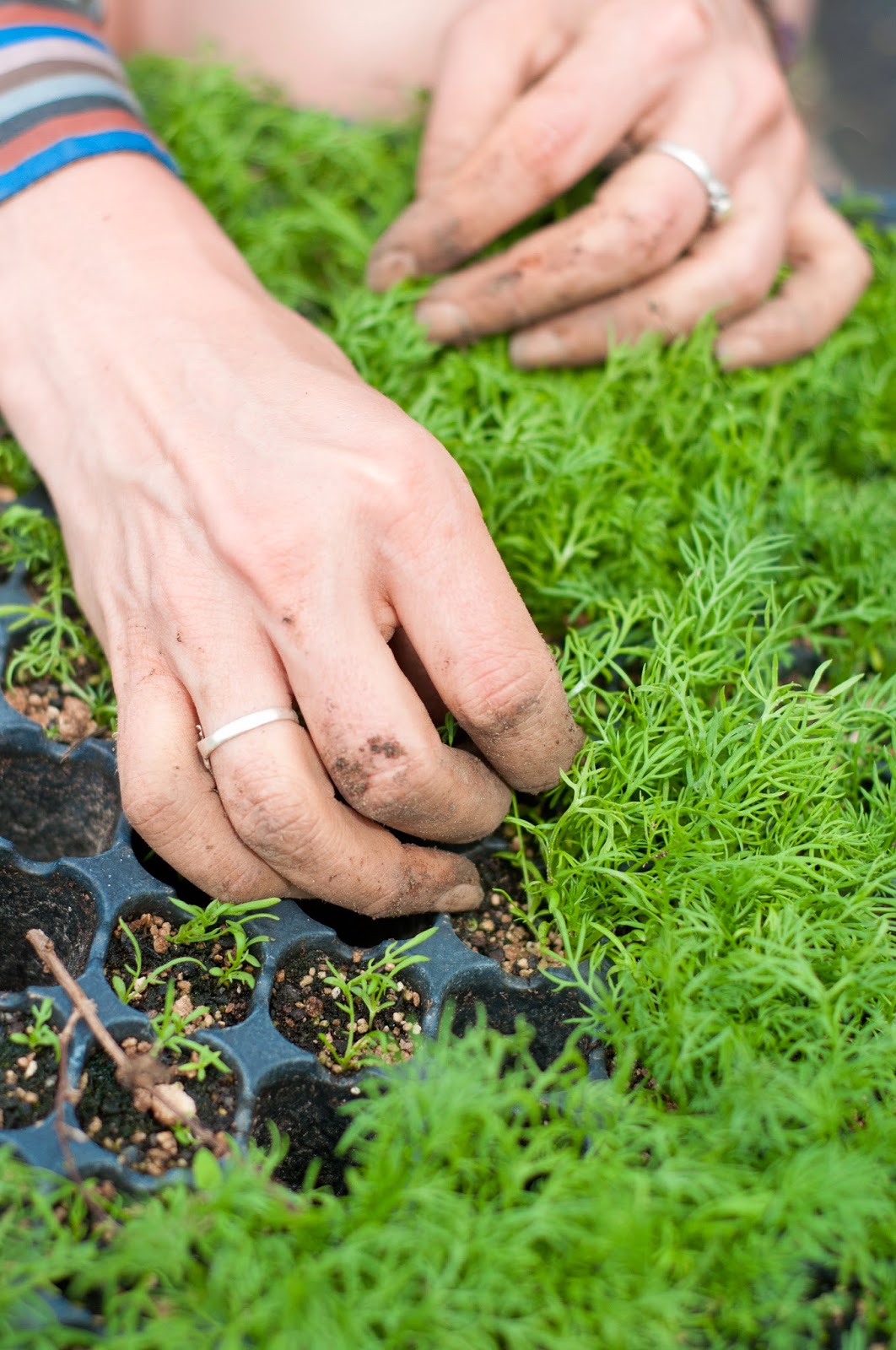Holly of Little Red Bird Botanicals tends a small plot at Clagett Farm. Amidst the farmyard chaos and despite the screech of the turkey she's managed to carve out a little slice of herb filled peace over the last five years. There's an air of quiet anxiety when a gardener first visits their piece of land after a hard winter. A held but hopeful breath.
 |
| Keesa enjoying the sunshine |
My experience with farming and gardening has always been with with the more macho sense of the word. Beefy tomato plants get yanked and discarded at the end of the growing season, seeds are snatched and hung if they are even kept at all, and a quick batch of winter-kill field peas gets thrown into the ground to the mercy of the first freeze.
An herbal garden is much different.
 |
| Peonies |
As we approached the bed Holly and her mother started to call out the name of plants.
"Oh look at the Mullein popping up."
"Good, we've got peonies here and over there the hyssop is looking good already."
As we surveyed the survivors I was struck by just how different this first day felt from past first days on agricultural farms. There was such palpable rebirth and regeneration here.
Like seeing old friends at your old favorite bar.
 |
| Black or perhaps Blue Cohash |
I spent the morning with Holly getting acquainted with her herbs, my head reeling with all the new plant names. We attended to each plant as individuals. Some budding plants needed to be freed from smothering encroachers, others we covered in a soft blanket of pine needles and others we just simply recognized with a few words before moving to the next.
As you weed an herbal medicine garden you learn that the traditional foes of farming: the chickweed, dandelion, plantain leaf and dead nettles, aren't really foes anymore. But even friends can overstay their welcome and butt in where they aren't invited so out we plucked them. We made a tidy little pile of chickweed for Holly to bundle home and mix into her smoothies. She praised their superior nutrition and invited us to take chickweed as well.
But wait. If they are so nutritive why cast them out of the garden?
"I don't bother growing things like chickweed in my garden when it's so abundant in our environment. Why plant something I can easily wildcraft?" Holly explained.
And she's right. Walking from my car to my apartment later that day I spotted chickweed growing between sidewalk slabs and clustered around the front steps. It's everywhere if you know what to look for. But where does one wildcraft in the city? How does one know where it's safe?
I still have much to learn it seems.
The time passed quickly with multiple hands at work and before we knew it the weeds were gone and it was time to wake up the nursery and start planing some seedlings. I watched and chatted with Holly as she placed the chamomile seedlings in neat little rows.
"I wish it was possible to get just one seed in each little hole, you know. It always ends up being these little clusters that you have to pull apart. But I'm going to plant them pretty close together so they grow up kinda bushy, like one big chamomile bush."
The slow, intentional act of planting is such a calming experience.
I'll be helping Holly throughout her growing season this year and documenting the growth of the garden and I can't wait to learn more. She sent me home with a hyssop and several little chamomiles of my own that I dutifully planted in close knit rows. Now all there is to do is water and wait.










No comments:
Post a Comment